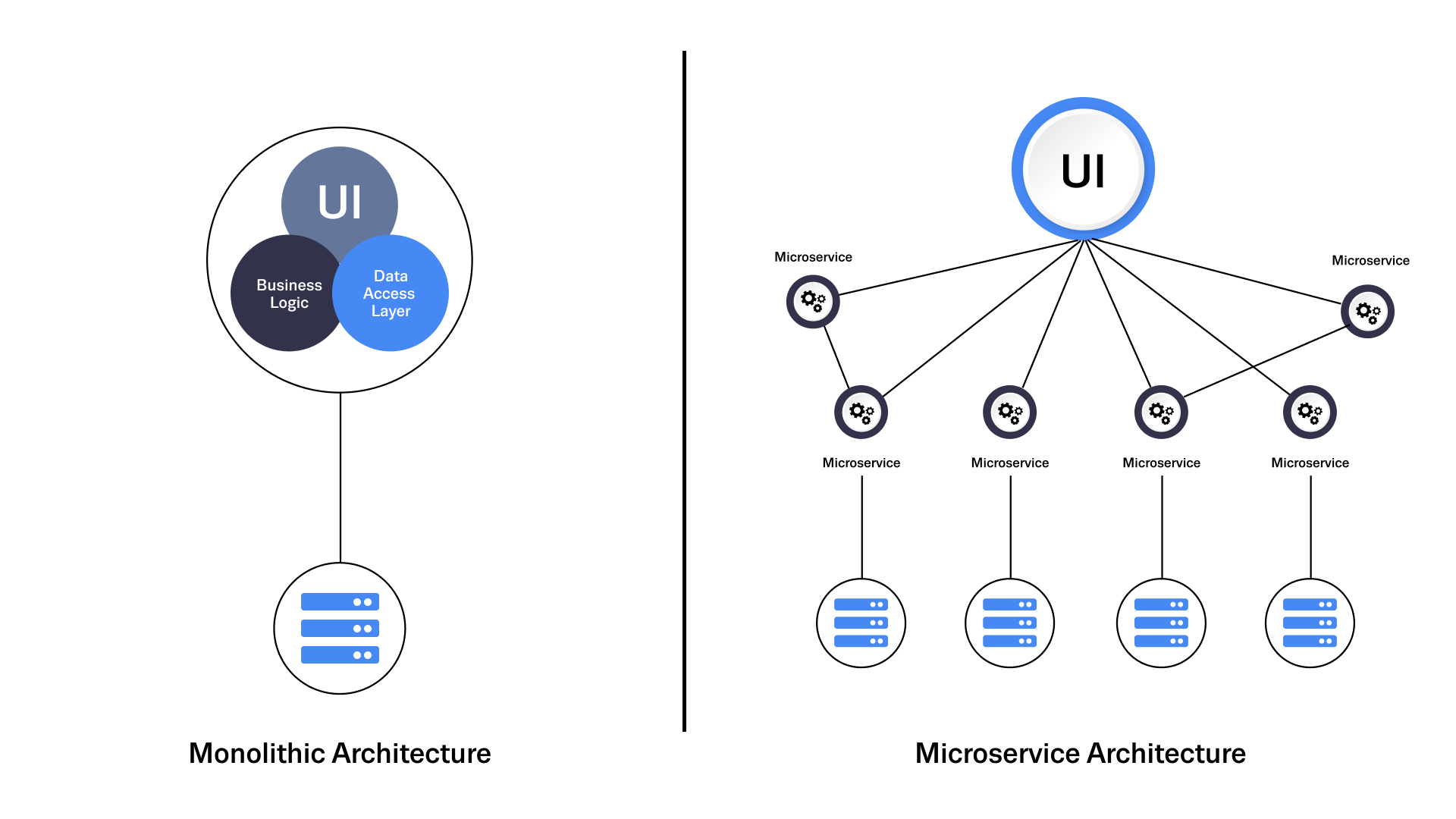
Monolithic vs Microservice Architecture: Which Is Best for Your Business?
When it comes to navigating digital transformation, selecting an appropriate software architecture is pivotal for business owners. Whether you are running a small startup or a large enterprise, the decision between monolithic and microservice architecture can significantly impact your server costs, maintainability, agility, performance, and scalability. This blog will help you understand the key differences between these two architectures and guide you on which one to use based on the size of your business.
Monolithic Architecture
Monolithic architecture is a traditional model where an application is developed and deployed as a single unit. This approach is often the starting point for new applications due to its simplicity and ease of development.
Pros
- Ease of Development: All your code resides in one place, making it straightforward to manage and develop, especially for small teams.
- Simplified Deployment: With only one application to deploy, the process is less complex, requiring just one CI/CD pipeline.
- Debugging: Easier to debug since all components are integrated, allowing for a unified view of the application.
- Performance: No inter-service communication latency as everything operates within a single codebase.
Cons
- Scalability Issues: Difficult to scale individual components, often requiring the entire application to scale, leading to higher costs.
- Maintainability: As the application grows, it can become bloated and harder to manage, leading to longer onboarding times for new developers.
- Release Cycle: Releasing new features can be cumbersome as even minor changes require redeploying the entire application.
Microservice Architecture
Microservice architecture breaks down an application into smaller, independent services, each responsible for a specific business function. This architecture is designed to address the limitations of monolithic systems, particularly for larger and more complex applications.
Pros
- Scalability: Individual components can be scaled independently, optimizing resource usage and cost.
- Maintainability: Easier to manage smaller, well-defined services, leading to improved maintainability and quicker onboarding for new developers.
- Agility: Facilitates frequent releases and updates since each microservice can be deployed independently.
- Technology Diversity: Teams can choose the best technology stack for each service, enhancing performance and innovation.
Cons
- Increased Complexity: Requires managing multiple services, CI/CD pipelines, and complex inter-service communication.
- Debugging Challenges: More difficult to debug issues that span across multiple services.
- Higher Initial Costs: Requires more infrastructure and monitoring tools, which can be costly for smaller applications.
Which Architecture Is Best for Your Business?
Small Businesses:
For small businesses or startups looking to digitise their operations quickly and efficiently, monolithic architecture is generally the better choice. The simplicity of having all code in one place reduces the time to market and minimises initial costs. Since scalability issues are less likely at this stage, the benefits of a monolith outweigh its drawbacks.
Medium Businesses:
As your business grows and the application begins to handle more users and features, transitioning to a microservice architecture becomes beneficial. This transition allows for better scalability and maintainability, ensuring that your application can grow with your business. Starting with a semi-monolithic approach, where key components are separated into microservices, can provide a balanced path to full microservices without overwhelming your team.
Large Businesses:
For large enterprises with complex systems and high traffic, microservice architecture is typically the best fit. The ability to independently scale services and the flexibility to use different technologies for different components ensure that your application remains performant and agile. Although the initial setup and infrastructure costs are higher, the long-term benefits in terms of maintainability, scalability, and agility justify the investment.
Decision Impacts
- Server Costs: Monolithic systems have lower initial server costs, while microservices can optimize costs in the long run through better resource allocation.
- Maintainability: Monolithic applications become harder to maintain as they grow, whereas microservices, despite their complexity, are easier to manage in the long term.
- Agility: Microservices enhance agility by enabling frequent and independent deployments, crucial for continuous delivery and integration.
- Performance: Monolithic applications may have slight performance advantages initially, but microservices offer better scalability and performance optimization as the application grows.
- Scalability: Microservices excel in scalability, allowing you to scale only the necessary components, leading to cost savings and better performance management.
In conclusion, the choice between monolithic and microservice architecture depends on your business size, needs, and growth trajectory. For small businesses, a monolithic approach offers simplicity and speed. As you scale, transitioning to microservices provides the flexibility, maintainability, and scalability required to support a growing and dynamic application.

Empowering Money Transfer Operators in the Digital Age: Remitso's Proven Expertise
The money transfer industry is undergoing a rapid digital transformation, and operators need a reliable technology partner who can help them navigate this complex landscape. Remitso, a leading provider of white-label software solutions, is uniquely positioned to guide your business through these changes.

Who is a Remitter? Unpacking the Heart of Cross-Border Payments
In our globalized world, the need to send money across borders has never been greater. Whether it's to support family back home


